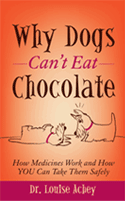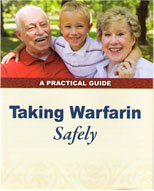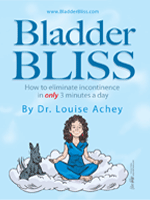Archive for July, 2015
The non-medical use of prescription medicines continues to increase, and deaths associated with unintentional overdoses of these continue to outpace those of traffic fatalities.
We’re dying from self-medication gone wrong.
According to the Centers for Disease Control and Prevention (CDC), the people most at risk for a fatal overdose from prescription medicines are the approximately 9 million Americans who take opioid analgesics chronically for pain and another 5 million who take these medicines for non-medical reasons, either without a prescription or a specific medical need. Opioid analgesics include narcotic pain medicines like methadone, oxycodone and OxyContin®, and hydrocodone/acetaminophen, which is also known as Vicodin®, Lortab® and Norco®.
Of particular concern to the CDC are people who seek medical care from multiple doctors or who take large amounts of opioid analgesics every day. While these 2 groups represent only 10% of Americans who take opioids regularly they account for 40% of the prescription overdoses that involve an opioid.
How can we stop the carnage?
One way to reduce the deaths from prescription drug overdoses is to get better control over the medicines that are causing them. This includes opioid pain medicines like methadone, oxycodone, hydrocodone with acetaminophen, and anti-anxiety medicines like alprazolam (Xanax®) and lorazepam (Ativan®).
Before these medications get into the hands of the person who will overdose with it, a prescription first has to be generated by a doctor or medical provider who is authorized to prescribe it and then sent to a pharmacy who then dispenses it to the patient or the patient’s agent. As pharmacists, we consider ourselves the guardians of these powerful and potent agents, and take seriously any attempts to procure it for non-medical use.
In some communities, pharmacists used an informal network of phone calls or faxes between their store, other pharmacies and doctor’s offices in order to give others a “heads up” about questionable activities involving prescription medicines. Information was sent along a “grapevine” about patients who were getting multiple prescriptions for the same thing from different physicians, dentists and hospital emergency rooms, who have altered their prescriptions by making 10 tablets into 100, or tried to call in their own refills for pain or anxiety pills.
Pharmacists also encouraged their local physicians to use this informal “drug alert” system to report stolen prescription pads or to inquire whether a patient had received any controlled substance prescriptions from providers other than themselves.
Today, there is even more need to share information between pharmacies and doctors to help identify potential misuse, overuse or diversion of controlled substances, particularly that of opioids and anxiety medications. Opioids which are narcotic analgesics and medications like alprazolam (Xanax®) used for anxiety are also referred to as “controlled substances” because they have a higher level of “control” on their prescribing and dispensing by the Drug Enforcement Administration (DEA) than other types of prescription drugs, such as those for diabetes or blood pressure.
Prescription drug monitoring programs (PDMPs) are statewide databases that collect information about prescriptions dispensed for controlled substances in order to make that information accessible to pharmacists and physicians to help guide medical care decisions. PDMPs are designed to allow doctors to review which prescriptions for controlled substances have already been dispensed to a particular patient and when, in order to provide better care and avoid overprescribing.
Washington State’s PDMP is an online database called Prescription Review. It includes a person’s name, date of birth, address, each controlled substance prescription dispensed, the medical provider who prescribed it, the date it was written, the date it was dispensed and the pharmacy which dispensed it. For additional information about Prescription Review go to: http://www.doh.wa.gov/PublicHealthandHealthcareProviders/HealthcareProfessionsandFacilities/PrescriptionMonitoringProgramPMP/PublicFAQ.aspx.
The real power of using PDMPs to reduce overprescribing will be seen when all 50 states have online, searchable PDMPs that connect to each other. You can find out more about PDMPs from www.pmpalliance.org or http://www.deadiversion.usdoj.gov/faq/rx_monitor.htm.
Leave a Comment
Hi Dr Louise- I am an RPh and my mother is receiving KCl 10Meq liquid which she has refused to take any more. Having tried it in all the usual flavoring vehicles i.e apple sauce etc I convince her Doc to try Micro K capsules. I believe the KCl is micro encapsulelated. Will be starting it tomorrow, mixing with apple sauce, maybe bananas, or ice cream. Do you have any other ideas what can be used for flavors etc.
This is a struggle for an 88 year old cancer patient, with a pace maker who expects me to make this stuff palatable.
Thanks-
Mark B. RPh
Thanks for your question, Mark.
There are two things going on here that I’ve learned from doing taste tests on liquid antibiotics for my family medicine residents. When it comes to making the medicine go down, there’s TASTE and then there’s TEXTURE. Either one or both can be the “yuk” factor that makes your patient balk at swallowing their medicine. The nastiest tasting liquid antibiotic we have recorded was Biaxin®, which was not only bitter but left this incredibly nasty grittiness in your mouth. One taste of that and we all understood why parents were calling us to complain that their kid refused to take another dose!
Although potassium chloride (KCl) liquid isn’t gritty, it IS a salt. And let’s face it, salt tastes, well, SALTY. And KCL liquid tastes really, really salty. And really salty things can be nauseating, not only on the way down but afterward, sitting in your stomach. Taking the potassium with food helps with the nausea.
Years ago we used to dispense potassium chloride as an effervescent tablet or in little packets that you would add to a glass of water or juice at home right before taking it. Most people found that tomato juice, orange juice or pineapple juice disguised the saltiness the best.
You mentioned using Micro-K®. That’s a capsule filled with little beads that you can either swallow whole or open up and mix with food. That’s much better than the liquid. My personal favorite over the years has been K-Dur® tablets. K-Dur® is a white pressed tablet made up of little crystalline micro-beads that has an iridescent look to it. I find K-Dur® much easier to disguise than using the Micro-K® beads because once a K-Dur® tablet hits liquid it “melts” into bland tasting mush with just a little bit of grittiness. I’ve actually tasted it to make sure. Again, when it comes to palatability of liquid medicine, I find that it’s all about taste and texture.
What flavors would I suggest? Hmmm… Years ago we had a problem disguising activated charcoal for kids on our Pediatric Unit. The best result we found with that age group was mixing the gritty charcoal bits with straight Hershey’s® syrup and using a “chaser” of 7-Up to get the gritty stuff down. The syrup’s thickness helped ease the grittiness of the charcoal, and kids like chocolate.
These days it’s easier to buy flavorings than ever, because instead of just unsweetened Kool-Aid® powder, you can buy Crystal Light®, Mio® and other products that flavor water. And now there’s Hershey’s® Syrup available in chocolate, caramel and other flavors. It helps hides grittiness because of its thick texture.
What does your mom like? Is her main objection TASTE or TEXTURE? Would she be willing to try a “chaser” of another food or drink to help rinse out her mouth?
Thanks for the question, and best of luck.
Dr. Louise
P.S. Anyone have any other ideas for Mark?
Leave a Comment
Q: I’ve heard that sleeping pills are dangerous. Are there any “safe” sleeping pills you can take?
Nearly 1 in 3 Americans will have trouble sleeping tonight, and 1 out of every 10 of us will take something to help us sleep. The older we get, the more trouble we have sleeping: insomnia is twice as common in elderly people. People who travel across time zones or work at night face the disruption of their sleeping and waking cycles.
There are 3 ways people experience problems with sleep: not being able to fall asleep, not being able to stay asleep, and not feeling rested after sleeping.
People experiencing physical discomfort such as pain, shortness of breath, heartburn or bladder problems have more trouble getting good sleep. Emotional upset also has an impact, especially anxiety or depression. In addition, many medicines have side effects that can interfere with sleep.
Concern about taking sleeping pills is not new. There have been several studies in the past showing that those who take a prescription medicine for sleep are more likely to die than those who don’t.
One recent study published a couple of months ago in the British Medical Journal concluded that those who were prescribed sleeping pills were more likely to die than those who didn’t take them, and the more doses they received, the higher their chances of dying. The study kept track of how many doses were dispensed to each participant; those who averaged more than 11 doses of a sleeping pill per month were 5 times more likely to die during the 2.5 years of the study than those who didn’t receive any.
Sixty per cent of the sleeping medicine in this study was either zolpidem, a popular fast-acting medicine also known by its brand name, Ambien®, or temazepam, an older sleeping medicine related to Valium®. The other 40% included a variety of other prescription medicines.
How would taking a prescription to help you sleep increase your chances of dying? One possiblity is that those who ask for something to help them sleep are sicker; they have more serious health problems than others. Another possibility is related to the side effects of these medicines, especially in older people: they can suppress breathing, especially dangerous if you have breathing problems, heart problems or sleep apnea. These medicines also cause problems with balance, contributing to falls resulting in head injury or hip fractures.
Most medicines for sleep should never, ever be taken with alcohol. This combination is a deadly one! Alcohol plus a sleeping pill can slow down your breathing enough to kill you.
Are there any safe sleeping medicines that you can take? It’s best if you avoid prescription sleeping medicine completely. Most prescription medicines for sleep were only studied for 6 months, yet people take them for years.
If you are trying to cut down on your medicine for sleep, try this: take only half the dose of a sleeping pill to start and put the other half out where it is easy to find. If you are still awake after 30-45 minutes, go ahead and take the other half.
Ask your medical provider or pharmacist if occasional use of a non-prescription sleeping aid would be safe for you to use. Diphenhydramine and doxylamine are antihistamines commonly used for sleep and are not prescriptions. Tylenol PM® has diphenhydramine in it to encourage sleep in addition to acetaminophen for minor aches.
Here are some suggestions to help you sleep better without adding a sleeping pill to your life or to your pillbox:
1. If physical or emotional discomfort is keeping you awake, getting treatment will improve your sleep. As the underlying cause of it improves, your sleep should improve as well. A mild pain medicine such as acetaminophen in the evening may also help.
2. Avoid drinking caffeinated beverages or taking medicines that have a stimulant effect in the evening or at night. Prescription medicine such as bupropion, prednisone, or decongestant tablets like Sudafed® can cause also sleeplessness.
3. If you take a water pill for blood pressure or swelling, take it in the morning. If you have to take it twice a day, avoid taking it after 3 pm if possible.
4. Physical exercise is a wonderful stress reliever and can help you rest better, that is, if you avoid activity binges like moving large boxes all day or strenuous physical activities.
Leave a Comment



